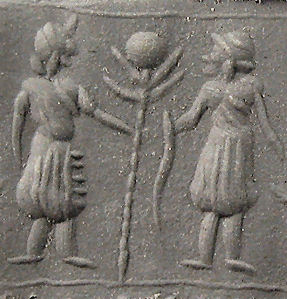This past month has been difficult for me. Hopefully, within this new lunar cycle and month of April, I’ll return more to myself and be able to feel Pagan again (This ‘spiritual’ stuff doesn’t come as naturally to me as I’d like it to). Starting today, I am committing myself to daily meditation. A few months ago I created a “mediation wheel,” based on the eight phases of the moon. So far I haven’t managed a complete cycle. I’d like to write about it in the future if I stay with it, and (most importantly) it works.
I’m reading (finally!) The Triumph of the Moon: A History of Modern Pagan Witchcraft by Ronald Hutton. It’s on loan from the public library and I’m unable to renew it, so I’ll only manage to read it once, although It’s the kind of book that wants to be read multiple times, so I’ll have to buy a copy eventually. I have requested three books on myth from the collage library, Myth and Cosmos, Myth and Philosophy and Myth and Reality, which should keep me busy next month and give me plenty to think (and hopefully blog) about.
I’d like to finish my brief series of posts Joining the End to the Beginning before the end of march. I basically know what I want to write, just need to do a small amount of research and get on with it. Also, I want to make a start on Altar Symbolism (3).
Amidst my turmoil, the first day of spring came and went. The snow had melted, the sun was shining. That night (or the following) it rained for the first time in months. I’m not used to no rain over the winter. It was wonderful.
I bought a pentangle pendant and now wear it proudly where ever I go (although I admit I hid it when visiting Shanny’s grandma a couple of weeks ago, so as not to cause her any heartache (Shan’s gran is a wonderful Christian lady).
Woke up 3 hours ago from a dream. I was back at my school (why I wanted to go back there I don’t know. It’s been 20 years and I hated it) and I had snuck into an empty classroom located at the basement of a stairwell. A teacher (or someone) discovered me and grabbed me by the hand to drag me away. Their hands were tiny, more like a child’s than and adult. She then began to impress me with her juggling skills and I told her that she was wasting her talent. I woke up at that point. Interesting dream. Worth recording. I really should get into the habit of recording my dreams.
Haven’t worked much with the Tarot. Another thing I’d like to change this moonth.
That’s it for now, I guess. I intend to meditate for a while and then steal some more sleep.
